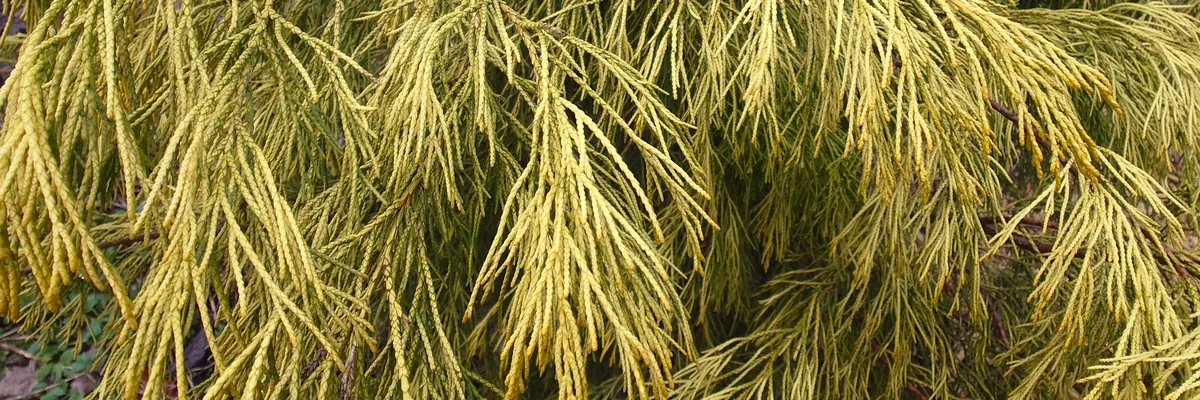When winter days are gray and gloomy, CHAMAECYPARIS lawsoniana ‘Karaca’ (Yellow Lawson cypress) becomes a delight. The fine and elegant foliage with its intense yellow color awakens the garden. Its moderate growth will make it a plant of 2 meters after about ten years. Incidentally, the subject in the photo is about 7 years old and approximately 1.70 m tall.
Furthermore, this plant has a graceful, drooping habit. It lends itself perfectly to applying the golden rule of landscaping: 1/3 evergreen plants and 2/3 deciduous plants. By respecting this rule, you make your garden as variable as it is beautiful in summer as in winter.
How to grow CHAMAECYPARIS lawsoniana ‘Karaca’
In fact, the Lawson cypress ‘Karaca’ can be planted in association with other shrubs in a bed, a container or isolated. When grown in a tank, its growth will necessarily be even slower.
In addition, this conifer thrives in any type of soil with any pH. Plant it in a sunny location for the most intense yellow. It is resistant to temperatures below −20 °C and suitable for both beginners and experienced gardeners.
History and Origin
First, the type species CHAMAECYPARIS lawsoniana is endemic to Oregon and northwestern California from sea level to an elevation of 1,500 meters. It often grows there along the rivers.
A Scottish nursery, named Lawson, first cultivates C. lawsoniana in 1854.
The species finds itself seriously threatened in its natural habitat.
Then, the thick bark protects it from fires and the wood weighs relatively little and has a good rot resistance, even after long exposure to salt water. Therefore, it was used in shipbuilding.
Large quantities of wood were exported to East Asia, and especially to Japan. It is employed there for the production of coffins and temples.
In addition, this wood gives off a strong scent of ginger.
Thanks to its fibrous structure, it is appreciated in the production of arrows. Given its lightness, aircraft builders consider it as considered acceptable, but not ideal.
Finally, its solidity, sound quality and always its fibrous structure make it a very regarded wood for the manufacture of guitars.




Leave a Reply